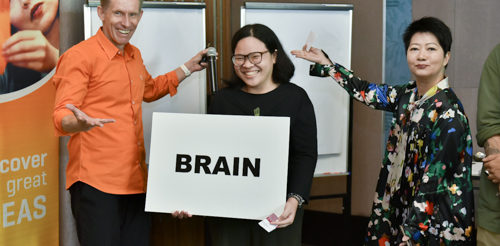How to find the people to drive digital innovation | Thinkergy

How to find the people to drive digital innovation
These days, many companies are interested in pursuing digital development initiatives and more progressive innovation projects. Why is that? The advent of the innovation economy and digital transformation will drive economies in the coming decades. Moreover, within the next couple of years, we’ll see the beginning of a new long cycle of technological and economic development: the Sixth Wave. Each long wave brings forth 2-3 new lead technologies that drive economic growth for a couple of decades. Each wave also sees the rise of a few start-up ventures that develop into market-dominating corporations. For example, companies like Apple, Microsoft, Google, and Facebook have risen to prominent positions in the present Fifth Wave driven by information technology, the Internet, and social networks. Apart from clean technologies and biotechnology & genomics, digital transformation triggered by artificial intelligence (AI), big data and automatization are predicted to drive the upcoming Sixth Wave (ca. 2020-2045).
To survive and thrive in times of exponential change, and to master digital transformation, established corporations need to start a new creative growth cycle. But where and how to find the creative and digital types to drive these new initiatives?
Enter TIPS
TIPS is Thinkergy’s innovator profiling system. We developed this comparatively new cognitive profiling method to better deal with the people side of business and innovation. The TIPS method consists of two overlapping theoretical constructs:
Put together, the four TIPS bases and the four TIPS styles form a profiling map that gives room for ten plus one distinct innovator profiles. Also, these two theoretical constructs allow us to identify those creative and digital types within and outside your organization.
Where to find the creative and digital types?
Nowadays, many corporations want to identify those creative and digital types within their knowledge workforce. These two target groups locate at certain TIPS bases, and exhibit specific dominant TIPS styles:
As the illustration below shows, the two groups overlap at the Ideas-base, indicating that those profiles touching this base can take part in both digital and creative project initiatives.
How to find the creative and digital types?
With the emergence of TIPS as a new cognitive profiling method for the digital innovation economy, it’s easy to identify the digital and creative types in your organization. Just get all your in-house talents and potential recruits TIPS-ed. In other words, have everyone take our TIPS online test. If you want to get a larger number of your knowledge workers TIPS-ed, you may qualify for a special volume pricing (which we offer for organizations that buy test coupons in bulk).
After you’ve tested your talents with TIPS, map out the results on a TIPS Profiling Map that shows everyone’s profile type and top scores. An earlier blog article discussed how you could do this. If you like (and have a budget), we can also create the profiling maps and a results matrix for you.
Once you’ve identified the digital and creative types, what next?
TIPS allows you to find those types who, based on their cognitive predispositions and preferences, are qualified to drive or take part in digital projects or progressive innovation projects. However, knowing that someone has the talent to work in digital or creative development projects doesn’t automatically mean that they are ready with the word “go”. It is more likely that many of these “digital” and “creative” talents may lack specific knowledge and skills to do so well right away. Why? If they finished their formal education a few years ago, it is unlikely that courses related to digitalization, creativity, and innovation were part of their curricula.
As such, you need to start talent development initiatives to equip those digital and creatives types with the necessary know-how to play out their natural strengths. (You may also want to take a look at this article on talent development titled Who should be trained in what?):
As such, get ready to invest in training programs to upskill your in-house digital and creative talents. Equip them with the knowledge and skills they still lack to contribute their natural strengths to digital initiatives and innovation projects. (And of course, consider also bringing in selected outside talent and fresh graduates who studied computer science or innovation).
How to prevent your digital and creative talents from leaving your organization?
In the coming years, the creative and, in particular, digital types will be in high demand and short supply. So, expect headhunters and competitors to approach your digital talents and top creative types regularly. What can you do to keep all those creative and digital talents in your ranks happy?
Conclusion: It’s all about knowing how to find, develop, and keep creative and digital talents
TIPS allows you to identify who in your workforce has a natural cognitive predisposition to partake in digital or progressive innovation projects. Some of these digital and creative talents may already have the necessary repertoire of pertinent knowledge and skills to get going right away. You need to develop most others by offering them tailored development programs with a mix of offline and online training courses.
So, get ready to invest in competing in the innovation economy and master digital transformation successfully. First, invest in a cognitive profiling exercise of your workforce to identify the digital and creative types. Then, invest in digital and creative talent development initiatives to quickly close identified knowledge and skills gaps. Finally, invest in keeping compensation and rewards schemes that keep your talents happy.
What’s the alternative? Fading into irrelevance and eventually becoming obsolete with your methods and technologies, products, and company.
Contact us to tell us more how we may help you find and develop those digital and creative types in your organization.
© Dr. Detlef Reis 2019.
